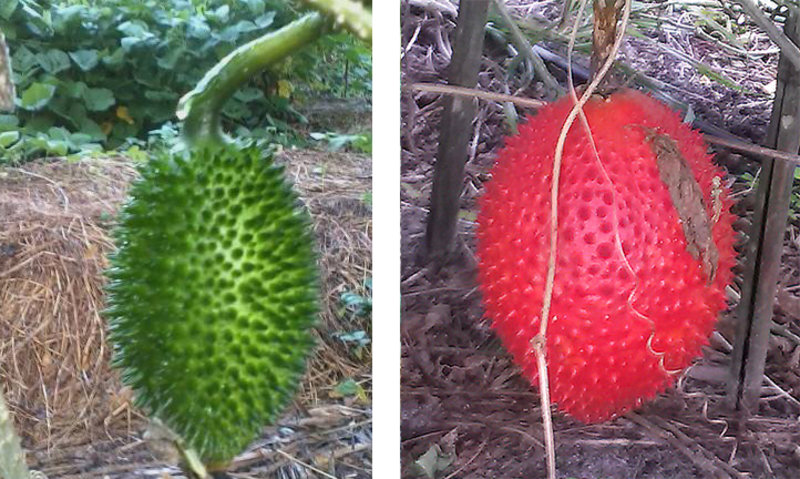EDN Issue 135 - Now Available
Publié
2017-04-18
In This Issue:
Biofortified crops: What are they, how do they work and why should we grow them?
The cheers and challenges of Conservation Agriculture programs
Echoes from our Network: Woman and Agriculture feedback from Joel Matthews
From ECHO's Seed Bank: Gac - A colorful and health-promoting fruit
eBook Releases: Options for Restoring Unproductive Soils and Options Where Water is Scarce
Gac: A colorful and health-promoting fruit
From ECHO's Seed Bank
EXCERPT: Perennial leafy greens, such as moringa and chaya, have been featured quite extensively in EDN. Here we focus on the bright orange-to-red fruit (Figure 7) of a tropical vining plant called gac (Momordica cochinchinensis). Belonging to the Cucurbitaceae family, other names for gac are cochin gourd, spiny bitter cucumber, and sweet gourd. Gac fruit has a mild flavor. Like moringa, it can be consumed in a variety of ways; it can be eaten fresh, cooked, or as a powder. Incorporated into traditional foods, gac adds both color and nutrition.
Gac fruits are best known for their high concentration of carotenoids, natural chemicals that protect against cell damage and are the source of yellow, orange, or red coloring in fruits and vegetables. By weight, beta-carotene is more concentrated in gac fruit than carrots. Similarly, gac fruit has a higher concentration of lycopene than tomato. Much more detail about these and other health-enhancing properties of gac are available in the literature (Chuyen et al. 2015, Minh 2014).
Gac is currently available from the ECHO Global Seedbank
Check out the ECHO Plant Information Sheet on Gac